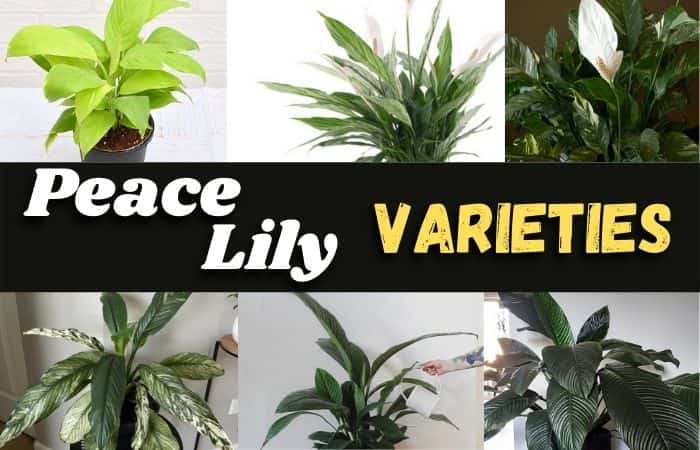Alocasia reginula black velvet care, propagation-All you need to know
If you are searching for a dwarf elegant variety of alocasia, then you may think about alocasia reginula or black velvet at first. The combination of shining and rigid foliage with transparent stems creates an extraordinary look in your house. But to get this benefit, you have to pay attention to this plant.
Alocasia black velvet plant needs bright and indirect sunlight with 40-70% humidity and 55-80°F temperature. Watering should be done when the 2 inches of soil is dry. You can use liquid fertilizer once a year in early spring for better foliage development.
Further, to get detailed information scroll down and go through the entire article.
Alocasia Reginula Black Velvet overview
| Scientific name | Alocasia reginula |
| Family | Araceae |
| Other names | Black velvet |
| Origin | Sabah state, Malaysia |
| Plant height | 30-40 cm |
| Plant type | Perennial plant |
| Leaf | Dark green leaves near to blackish tint with clear white veins |
| Stem | White small stem |
| Soil | Sandy loam and well-drained soil |
| Sunlight | Bright indirect sunlight |
| Watering | Dryness of at least the top 2 inches of soil needs watering |
| Humidity | 60-75% |
| Temperature | 55-80°F |
Where to buy alocasia reginula black velvet plant?
Buying an alocasia velvet plant may be a hassle for you as it is a rare plant which is not found in all nurseries. Still, you can search for it in your local plant shops or nearby nurseries. But, if you can’t find the plant in there, then search on the websites like Etsy.
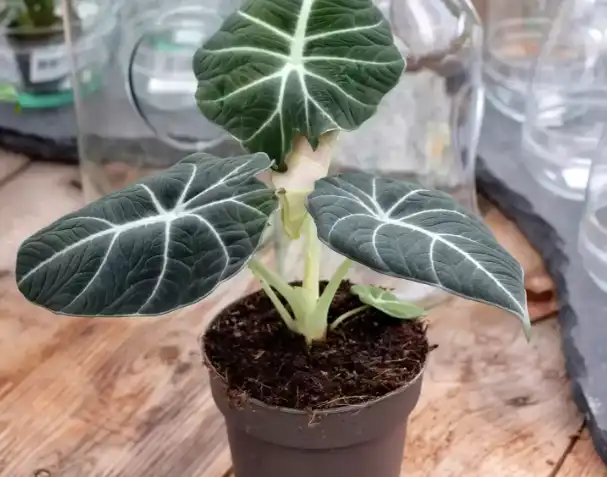
Alocasia reginula black velvet plant care
An alocasia reginula or black velvet plant doesn’t need a lot of care. But noticing some specific points is mandatory if you want a beautiful appearance of this glossy small plant. The points are about their watering, soil medium, fertilizer requirement, temperature, humidity and the light intensity that you have provided to your plant.
Light requirement
As a basic need, I think I should discuss the light first. Black velvet plant tends to grow in bright sunlight but that should be indirect. Indirect sunlight is much preferred due to their foliage surface as direct heating of the sun may burn them. But they need bright sunlight for their all-over growth.
Watering guide
Watering is one of the most important factors of the black velvet plant. They need watering when the soil gets dry in the sub-surface of 2 inches. You should provide enough water but excessive watering may lead the plant to death because of pest attacks and root rot problems.
Soil requirement
Soil medium should be perfect for the plant which can be prepared with sandy loam soil, coco-peat, perlite and sphagnum moss. The sandy loam soil will retain moisture and facilitate the drainage system. The rest of the materials will enhance the nutrient status of the plant. But make sure that the drainage system is properly maintained.
Temperature and Humidity
Alocasia reginula plant has an optimum temperature range which is between 55 to 80°F. It requires humidity of about 40-70%. The moisture level should be perfectly maintained because too much humidity increases pest infestation and too low humidity is responsible for leaf discoloration. Again, extremely low temperature creates frost attack and high temperature increases the transpiration rate.
Best fertilizer for black velvet
I want to end the list of plant care with its fertilizer requirement. A balanced and liquid fertilizer is needed to maintain the plants’ health. You can mix a few drops of the fertilizer with water according to your plant’s condition and the instructions remaining in the fertilizer bottle. Else, if you want to use fertilizer columns or sticks, you should fix them at the border of the pot, not in the root zone. Otherwise, the root will be devastated.
Alocasia reginula black velvet plant propagation
The stem cutting of alocasia black velvet is one of the easiest methods of propagation. To complete this procedure easily, you will need a scissor, a healthy black velvet plant and a new pot with prepared soil medium.
Step 1: Mother plant: Firstly select a mother plant that has vibrant foliage and no sign of insect or disease attack. The plant should attain the maximum height and width.
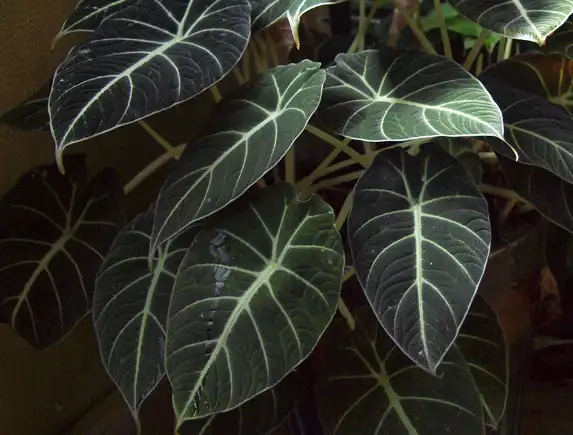
Step 2: Cutting: The plant has to be uprooted and then divided into two or three parts. Each part should have a root and at least a node. You can divide it with a knife or a cutting material available to you.
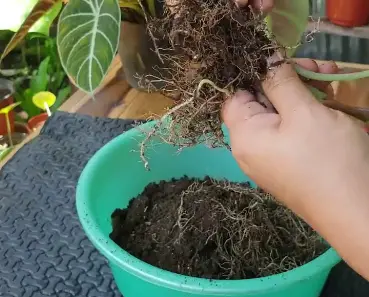
Step 3: Planting: Plant the cutting in a well-prepared soil medium as I explained before. Then, water the plant a little and take proper care of it.
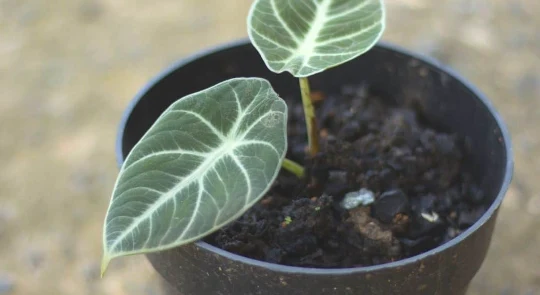
How to repot alocasia reginula black velvet plant?
Repotting alocasia velvet is needed when they start to extend their foliage. Again, root-related many problems like root rot, pest attack and overwatering can be sorted out by this procedure of repotting. So, for this purpose,
- Simply uproot the plant without disturbing the root.
- Prepare a pot with soil medium.
- Place the plant in the new pot.
Why are my alocasia reginula black velvet plant leaves turning brown?
Alocasia velvet plant leaves may turn brown due to overwatering. When you water too much, the root starts to rot due to a disease attack. As a result, the root cannot supply proper nutrient ingredients to the plant and as a result, the plant leaves lose turgidity and get brown colors.
Why is my alocasia reginula black velvet plant having black spots on its leaves?
Alocasia reginula plant gets black spots on their leaves because of insect attack. Insects like aphids and mealybugs take food and create excrete sugar substances which fall on the lower leaves. As a result, those materials block the way of photosynthesis and those places take black appearance as black spots.
Alocasia reginula black velvet plant vs alocasia black ‘ninja’ plant
Alocasia black ‘ninja’ is supposed to be originated as a modified form of black velvet. Both of the plants have the same leaf color and leaf venation. The foliage structure is almost the same. Both of them have also a white border on their margin. But the only difference remains in the veinlets. The reginula leaves have no clear veinlets. But white striped veinlets are seen in the ‘ninja’ plant.

Alocasia reginula black velvet plant vs alocasia frydek Plant
Alocasia reginula and alocasia frydek both of the plants have green foliage with white clear veins. But if you notice properly, you can understand that the reginula veins are curved whereas frydek veins are straight and pointed. Again, the leaf margin is wavy in frydek but the margin is smooth and rounded in reginula plant.
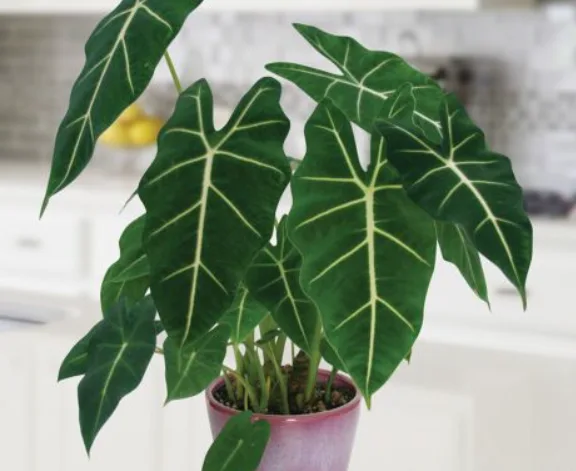
Why does the alocasia reginula black velvet create toxicity?
Alocasia reginula plants create toxicity due to the presence of calcium oxalate as their body substance. This material creates itching, allergy, vomiting and other poisonous effects in humans and pets. Children should be kept far away from the plant to save them from such irritations. Gardeners should take proper precautionary measures if anyone has an allergic problem while caring.
Final thoughts
So, I have to finish here the entire conversation about the caring of alocasia reginula or black velvet. Based on their caring and problems, I want to suggest some specific things-
- Don’t keep your plant in direct sunlight.
- Try to maintain the moisture level perfectly to avoid any problem.
- Water your plant regularly after noticing the soil dryness.
- Fertilize your plant once a year.
Most probably, if you can maintain the guides properly, your plant can be safe and you may enjoy a beautifully decorated corner of your house.

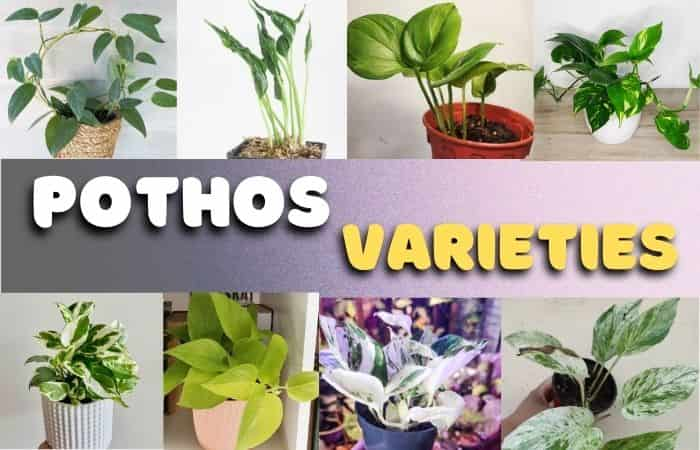
![7 Tips to Peace Lily Care Indoor || How to Grow & Bloom Them- [Complete Guide]](https://diaryforgardening.com/wp-content/uploads/2020/10/Peace-Lily-Care.jpg)
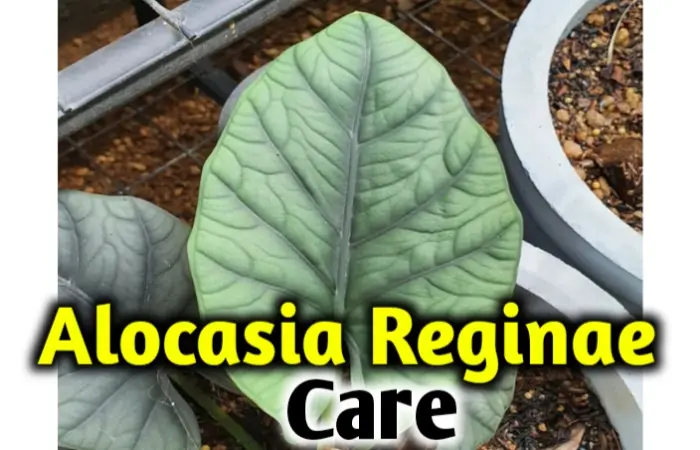
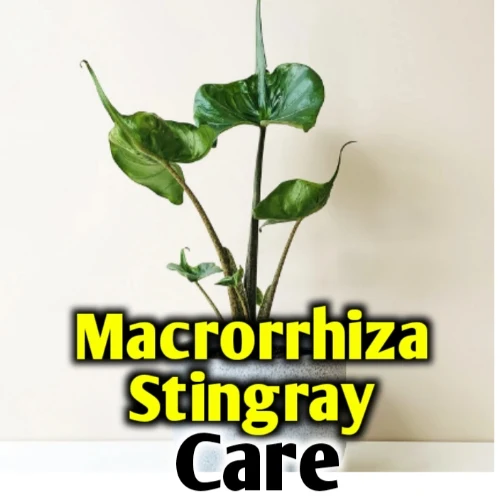
![How to water Peace Lily while on vacation [Pro Tips]](https://diaryforgardening.com/wp-content/uploads/2022/09/Peace-lily-watering-on-vacation.webp)
